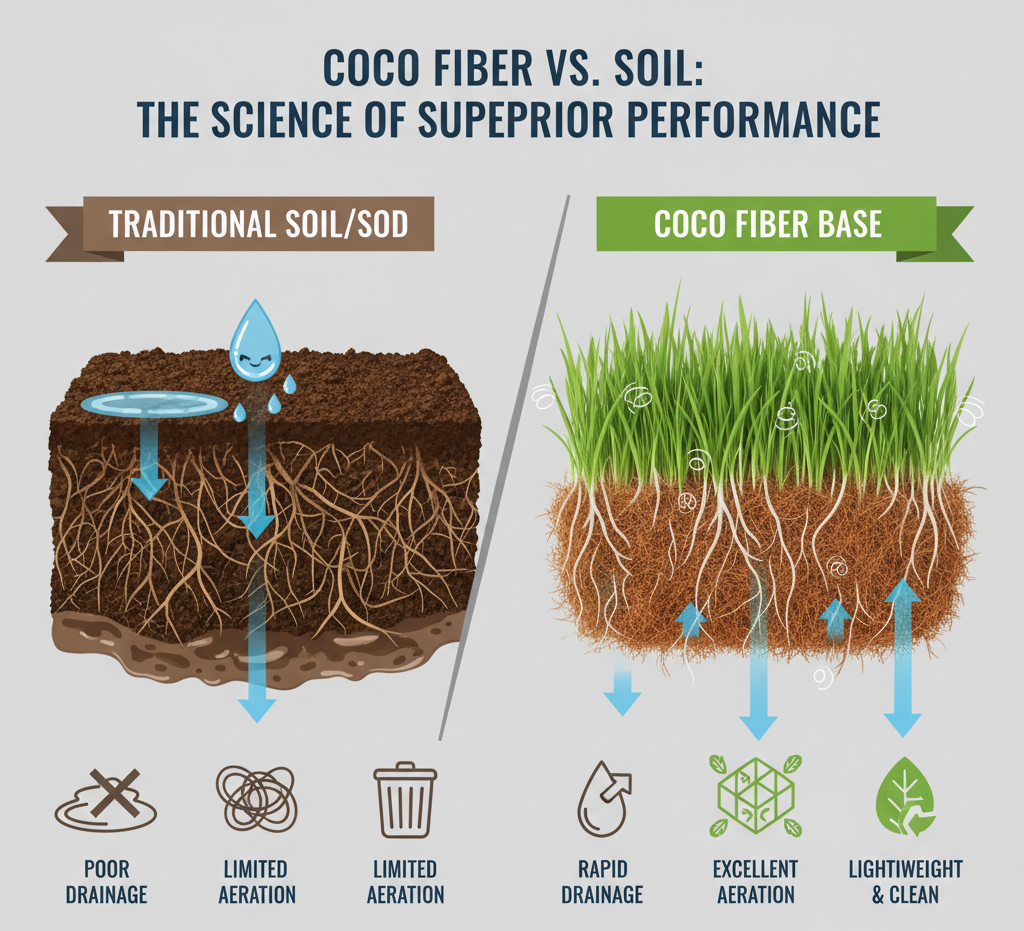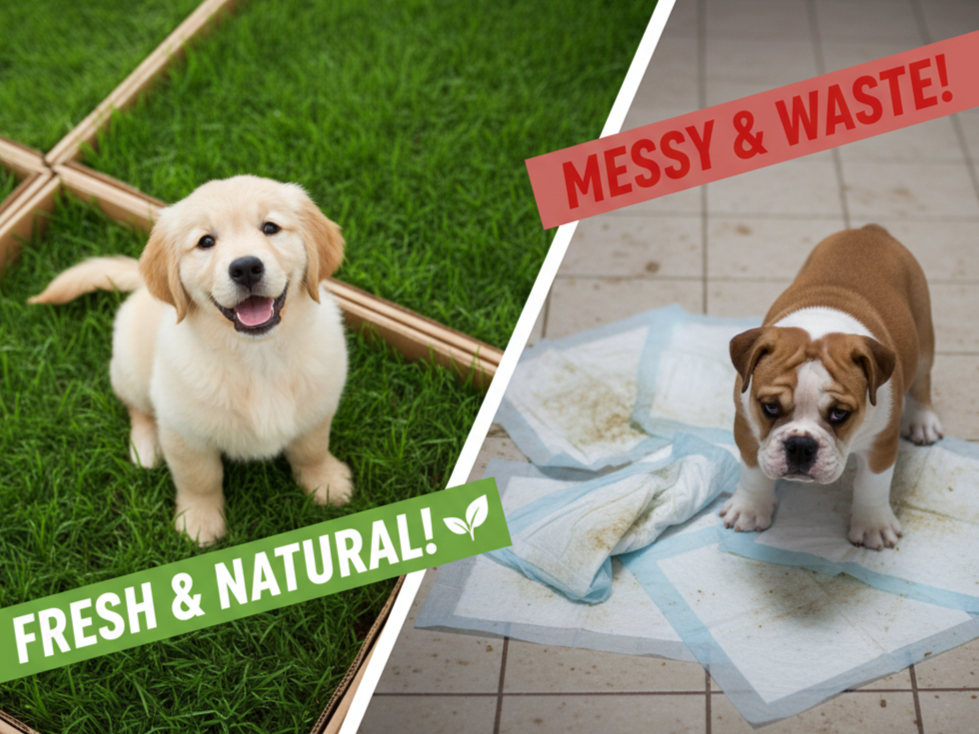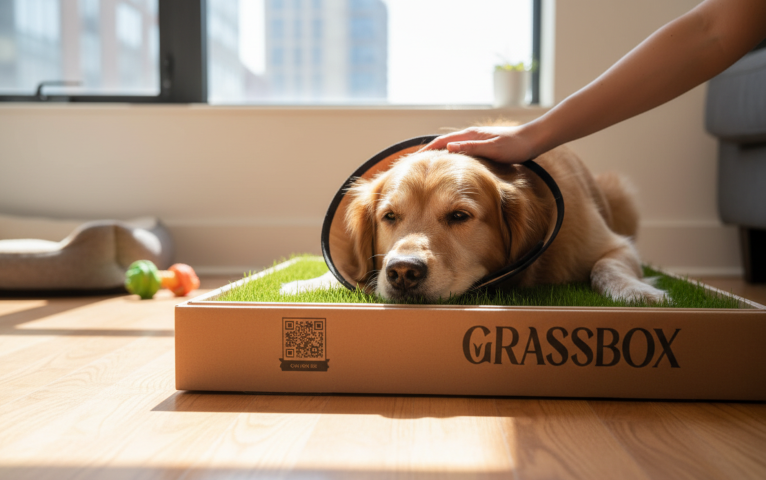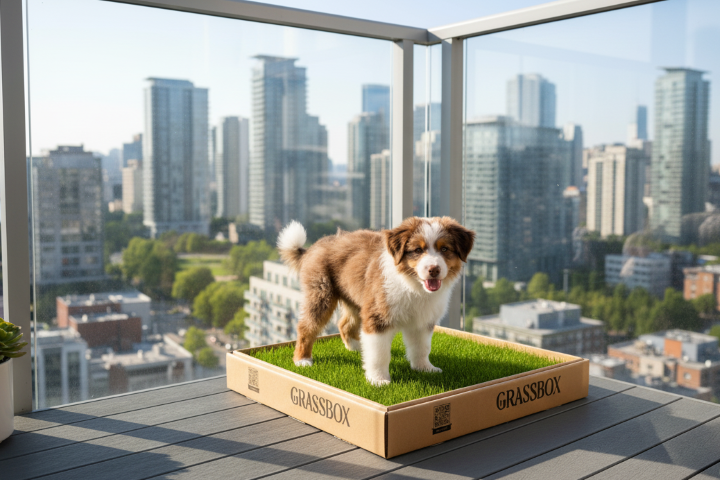Why Coco Fiber Is Better Than Sod for RealGrassBox Dog Potty Patches
Introduction
When you think of “grass,” you might picture sod in soil. But for indoor dog potty patches, coco fiber (coco coir substrate) often outperforms sod. In this article, you'll learn why coco fiber offers superior drainage, odor control, durability, eco-friendliness, and control — and how GrassBox is built around this smarter choice.
1. What Is Coco Fiber / Coco Coir?
Coco fiber is derived from coconut husks and processed into a porous, fibrous growing medium. It’s commonly used in horticulture and hydroponics for its ability to hold water, maintain aeration, and resist compaction.
Unlike sod, which includes soil, microbes, and often variable chemistry, coco fiber is a cleaner, more predictable substrate.
2. The Advantages of Coco Fiber Compared to Sod
Less Chance of Bringing Bugs and other pests into your Home
Soil in sod can contain bugs, worms, and other pests. The coco fiber in our has been washed and cleaned, then grown in our indoor farm so there is much less chance of it containing pests.
Superior Water Management
Coco fiber can absorb many times its weight in water while still maintaining air space for roots. That balance is hard to match with sod and soil, which can saturate or compact.
Resisting Compaction
Under repeated use and moisture changes, soil often compacts. Coco fiber holds structural integrity longer under similar conditions, preserving oxygen flow.
Cleanliness and Odor Control
Soil breaks down, hosts microbes, and can trap odor. Coco’s cleaner profile and better drainage minimize lingering smells — ideal for indoor settings.
Sustainability
Coco fiber is a renewable byproduct of coconut processing. It offers lower ecological impact than extracting and transporting heavy soil and sod.
Precision & Control
Because coco fiber is inert, growers can precisely control fertilizer and water regimes without fighting unpredictable soil variables.
3. Addressing Common Concerns
-
Grass root health: With proper watering and nutrients, grasses root well into coco fiber substrate.
-
Nutrient content: Coco fiber does not supply much fertilizer itself — but this allows you to tailor inputs.
-
Salt or impurities: Quality coco fiber should be flushed and buffered to remove excess salts.
-
Cost: Though initial cost may seem higher, lifetime value is often superior due to less maintenance and fewer failures.
-
Pest or mold risk: With correct drainage, ventilation, and waste removal, indoor risks are minimal.
4. How GrassBox Leverages Coco Fiber
At GrassBox, we pair real grass with a coco fiber base to deliver:
-
Balanced moisture and drainage
-
Clean, indoor-friendly performance
-
Lightweight, manageable trays
-
Refresh cycles tuned to preserve substrate performance
This combination gives your dog a natural feel and gives you better control than plain sod or soil mixtures.
5. Conclusion & Call to Action
For indoor dog potty patches, coco fiber is a smarter substrate than sod. It offers better water balance, durability, hygiene, and sustainability. When paired with real grass — as in GrassBox — it delivers a premium experience that synthetic pads, bare sod patches, or soil-based methods struggle to match.
Ready to see the difference? Try a GrassBox patch and feel what real grass on smart coco fiber looks and smells like — for your dog and your home.
References
Old Farmer’s Almanac, “What Is Coco Coir?” (2023)
Live to Plant, “Benefits of Using Coco Coir in Potting Mixes” (2024)
Gardening Knowledge Base, “Coco Coir for Soil Aeration and Water Retention” (2023)
GreenPlanet Nutrients Blog, “Why Coco Coir Is Superior to Soil” (2022)
AgriSmart Research, “Lignin Composition and Longevity of Coco Coir Fibers” (2021)
Hydroponic Society of America, “Coco Coir in Sustainable Indoor Systems” (2022)
Adhi Annan Coir, “Sustainable Gardening with Coco Coir” (2024)
HydroFarm Technical Bulletin, “Buffering and Washing Coco Coir for Plant Safety” (2023)
EcoAgriTech Journal, “Hydroponic Systems and Water Efficiency Metrics” (2023)




